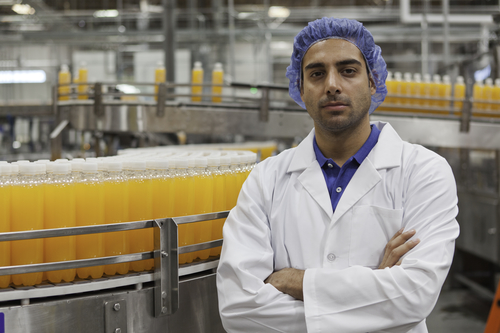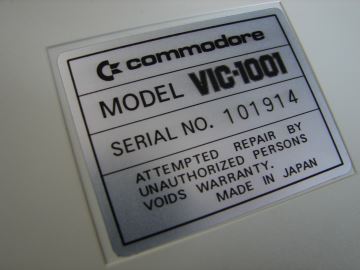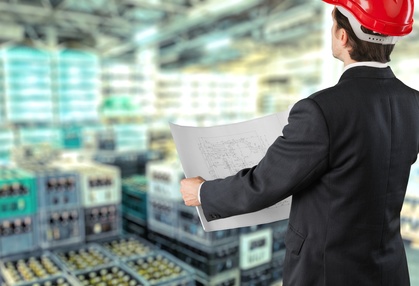Food Manufacturing Streamlining with Manufacturing ERP
The use of Enterprise Resource Planning (ERP) is an essential component in the management of food products manufacturing.

You can also listen to this article:
ERP system use will result in:
- greater productivity
- shorter manufacturing and delivery times
- increase the total product quality
- increase the company’s ROI
Regardless of the scale of the company, or whether it uses a continuous or a batch process, the ERP allows planning, improving, documenting and consolidating the manufacturing processes of food products in an integrated management system.
The ERP is appropriate not only for large companies, but also for medium and small companies. Select the right ERP software to optimize the implementation time, the man-hours and the economic investment.
The following are the main benefits when you install an Enterprise Resource Planning system in your company:
1. Integration of the Functions of the Organization
Can you imagine an organization where the departments work in watertight compartments or silos?
Effective communication is a key point to develop an effective food manufacturing system. The impacts on some functions when implementing an integrated ERP management system are as follows:
- Sales can determine the availability of finished products and set discount policies.
- Planning gets updated sales forecasts. It is possible to build a strong Production Plan and Master Planning Schedule (MPS), with a vision for the mediate and immediate future.
- Production will have the ability to track the progress of the production programs. It will also detect efficiency opportunities (Machine, Labor, Materials).
- Maintenance will be able to examine the available time. It will be capable to set and deliver proper preventive maintenance and interact with the Manufacturing team.
- Warehouse will ensure correct availability of raw material, semi-finished goods and finished goods.
- Logistics will ensure compliance with delivery programs in time and quantity using a proper inbound and outbound logistics system to either warehouses or distribution centers.
- Purchasing will carry out an adequate procurement process.
Can you think of a better way to integrate all business variables without the use of an integrated management system?
2. ERP Leaves Behind Outdated and Ineffective Planning Systems
Regardless of the type of food product, you stop using the spreadsheets. Food Company’s needs agile management tools to maintain their competitiveness in the market. Cloud-based production planning software represents the solution to this problem.
The use of these tools contributes to:
- reduce manufacturing waste
- maximize manufacturing efficiency
- improve communication effectiveness; ERP systems reduce the excess of communication via email or telephone
- improve company’s planning system
- maximize the return on investment
3. Update Business Variables
The product prices, the costs, the delivery times or the product formulas – just to mention some variables – are in one place. Having an ERP system will allow to set the input variables and get quickly the output variables.
You can track customer prices, compare historical cost information, delivery times, manufacturing times or product compositions. The ERP allows organizations to focus on the business strategy rather than tactical changes.
4. Streamline the Sales Process
The sales area has series of tools capable of increasing the sales productivity:
- it generates quickly accurate quotations
- It tracks quotations and delivered orders
- sets prices by adding the markup to the total cost
- sends quotations and invoices in a fast speed
- in case of using EDI boosts the speed of communication with key business partners
5. Optimization of the Productive Capacity
Every food company has machines and equipment, transforming the raw material into a final product. The ERP software allows you to load them into the system and define the production capacity per machine. On the other hand, it allows immediately detecting idle capacity and reallocating resources. It’s possible to manage the bottlenecks, update seasonal volumes as well as trends and plan capacity increase for the future.
6. Optimization of the Inventory Levels in Time and Quantity
The most usual problems related with inventory management that every food company faces are below:
- raw material or ingredients not found in the warehouse
- finished or semi-finished goods have exceeded its shelf-life
- there’s excess of SKU’s in stock
- there’s material “just in case”
- other departments need to give a phone or send an email to check product availability
The ERP leaves these problems behind. ERP allows all functions – with the corresponding permissions – to access to a unique, reliable and updated source of information.
7. Correct Traceability of Food Products
The use of an ERP system with food traceability software functionality streamlines the supply chain and ensures that its food products arrive to customers and distributors properly.
Enterprise Resource Planning (ERP) manages recipes, quality control compliance, and traceability. All from an integrated system, designed specifically for the needs of your industry.
Track manufacturing orders in real-time and reduce delivery times for faster delivery. Easily identify the location in time and space of the products of your organization.
8. Proper Procurement Planning and Sourcing Process
Procurement handles all the purchases, but…
- what quantity should a company buy?
- when and how often should a company buy?
- how much should a company buy?
Using watertight departments is not the optimal solution. Logistics, Inventory, Production, Sales, and Procurement need to exchange unique, reliable and updated information.
Imagine the case in which the volume demand of a certain candy has increased unexpectedly for the next period. It’s necessary to ensure that all direct materials (i.e. ingredients, raw materials and packing material) are on hand. Get the output data from the Master Production Schedule figures and let production start with no delays.
Using a reverse planning, it will be possible to determine:
- the detailed quantities of materials defined in recipes or bill of materials (BOM)
- the timings required to dispose the materials on hand
- explosion of the amount of materials required for all SKUs involved per period
- optimize the purchasing volumes and minimum order quantity
- get cost savings by optimizing the purchasing volumes
- communicate any material delay or lack of materials to the rest of the organization
9. Proper Handling of Recipes or BOMs
Do you have accurate information on the amounts of ingredients that your organization requires to obtain a unit of each SKU?
What happens every time the recipes or the ingredients change or the finished product has new specifications?
In today’s food industry, it’s necessary to have an agile and precise system to convert raw material into the finished product. Determine with no extra calculations the amount of required ingredients from the volume demand with the BOM software.
10. Optimization of the Supply Chain Efficiency
The use of ERP allows you to buy what is needed, when it is needed and combine the factors of production on time. Feel free to make changes in the sales forecast and the system will quickly update all the dependent variables of the organization. Create production orders and streamline the picking list are some of the advantages when using an ERP.
11. Streamlining Economic and Financial Operations
Gain visibility of trends with integrated reports of sales, costs and profitability by product or family of products.
What happens when an organization implements an ERP system?
The implementation of an ERP can benefit a food business in multiple ways. Summarizing, it contributes to build a system in which customers receive the right amount of product with the right quality at the right place and time.
Take your organization to the next level using ERP software and let your organization focus on your business core.
Find the best solution from our list of the Top Six Manufacturing ERP Systems for Small Manufacturers.



